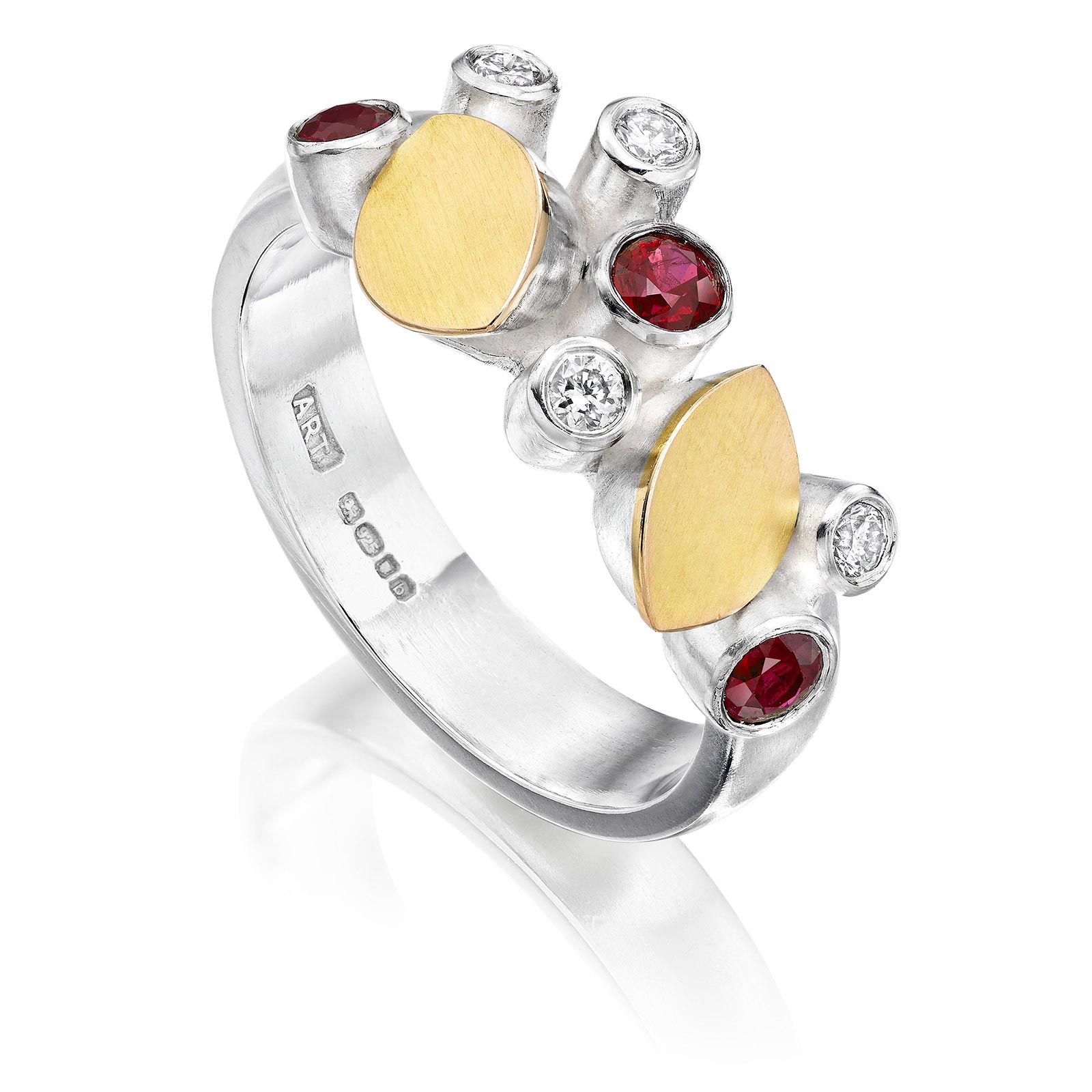So why are diamonds so special?
Diamonds are made entirely of carbon and are formed naturally from extreme temperatures and pressure beneath the earth’s crust, consequently no two diamonds are the same. It is also the hardest natural substance on earth and can only be scratched by another diamond, so it is fitting that the word diamond originated from the Greek word ‘adamas’ meaning indomitable or invincible.
The world of diamond buying can be a mind field with so much choice in shape, size, and colour and what do those 4 ‘C’s actually mean and are they important?
Well, yes they are and they stand for Cut, Colour, Clarity and Carat. So, let’s go through them one by one and you will see it isn’t so mind boggling as you may think.
Cut
This is probably the most important one as a beautifully cut diamond enables the light to be reflected internally throughout the different mirrored facets and surfaces of its form, creating the sparkle and brilliance of the stone, giving it that fire and life from every angle. A badly cut diamond, no matter how big or brilliantly white, will never have that internal radiance. Below are some example of cuts and how a stone which is too shallow or too deep is not the best decision.
Colour
Diamonds range in 23 colour grades from ‘D’ pure white, to ‘Z’ with yellow overtones. Yellow diamonds can be just as beautiful as white ones as they have a wonderfully warm tone on the skin, so this is personal preference. A handy tip to remember, diamond prices decline or increase in alphabetical order. For example, a diamond with a G colour grade is less expensive than a diamond with a D colour grade.
Clarity
Clarity refers to a diamond’s natural inclusions.
Natural diamonds have been created by extreme heat and pressure deep within the earth, millions, and even billions, of years ago. This organic process means that just about all diamonds contain internal features, for example traces of minerals or uncrystallised carbon, called inclusions or flaws. Obviously the fewer inclusions the greater the clarity. A good place to start your search and maximise your budget is with Slightly Included (SI) and Very Slightly Included (VSI) grades because inclusions will not be readily noticeable without magnification in these grades. The term “eye clean” means that the diamond’s inclusions are too small to be seen without magnification
Carat
This is a measurement of a diamonds weight, not its size. Very small diamonds can be far more valuable than larger ones if they are of better clarity or cut.
While it’s true that a big rock can be a status symbol, carat weight is not related to sparkle. Beautiful sparkle is the result of a well-crafted cut. In fact, a high carat weight diamond with a poor cut may look smaller than a diamond with a smaller carat weight and a very good cut. When you buy a GIA certificated diamond all of the ‘C’s will be listed, so you are assured of its value but remember that no two diamonds with the same 4Cs are the same and may differ greatly in beauty. It therefore also becomes a very personal choice once you know the quality is assured.
So, to summarise when buying that diamond consider these top tips!!
Tip 1-Set your budget and let your jeweller know what this is. Commissioning a bespoke diamond piece is about trust, so choose a jeweller you have confidence in to get you the best diamond for that budget.
Tip 2 -Understand the 4 ‘C’s, Cut , Clarity, Colour, and Carat!!
Tip 3 -Prioritise diamond Cut above all. The better the cut, the more your diamond will sparkle!!
Tip 4 -Put clarity in perspective. Nearly all diamonds have slight inclusions and who can afford a flawless one!! Go for VSI1, VSI2 0r SI1.
Tip 5-Consider near-colourless diamonds instead of colourless. For great value and quality start you search with a G or H grade.
Buying a diamond is a big decision so take your time, get good advice and trust your jeweller!!



